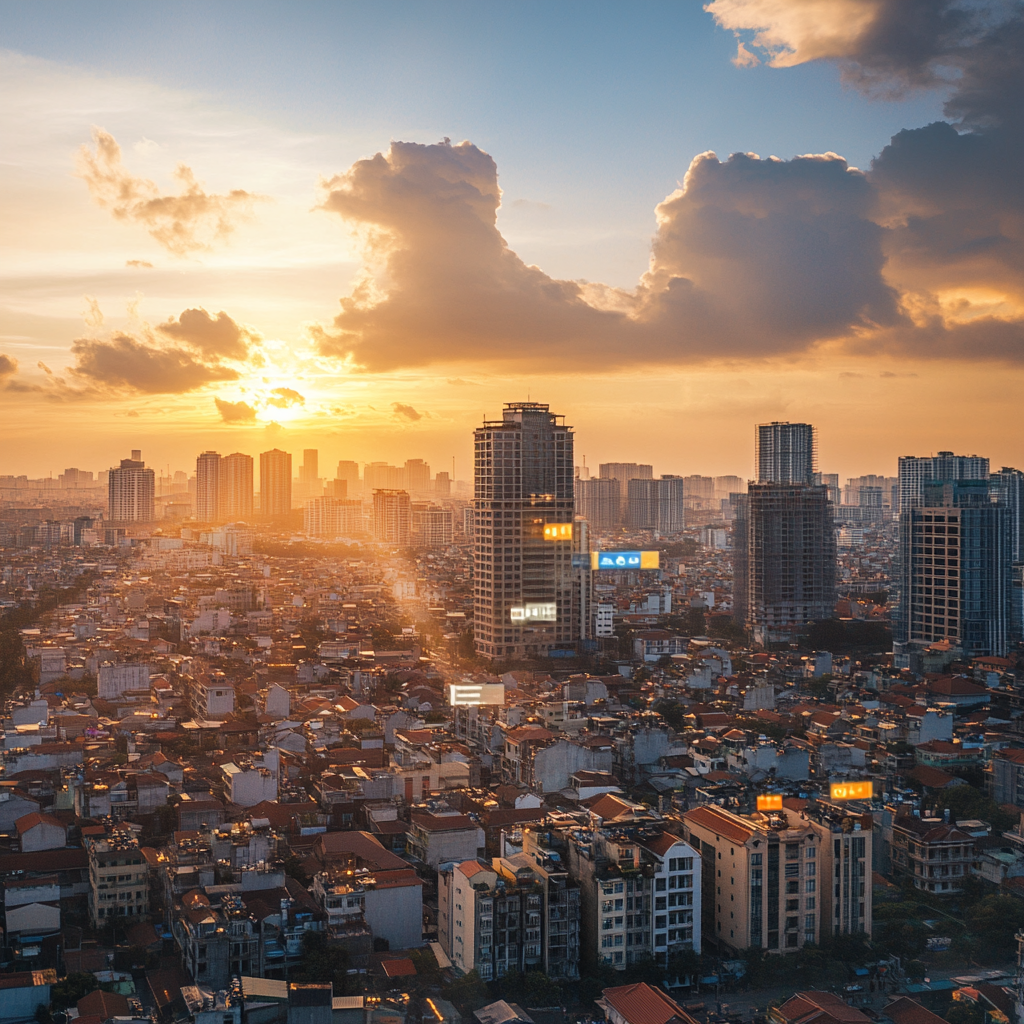In 2024, Vietnam’s economy is demonstrating strong post-pandemic recovery momentum, with GDP growth projected to exceed 6.8%. For 2025, the government has set an ambitious target of 7% growth. Prime Minister Pham Minh Chinh recently submitted a report to the National Assembly detailing the country’s economic progress and future strategies, highlighting how policies such as digital transformation, green development, anti-corruption efforts, and improving the business environment are key drivers of sustained economic growth.

Solid Economic Data: Exports and Manufacturing Accelerate GDP Growth
In his October 21 address to the National Assembly, Prime Minister Pham Minh Chinh noted that Vietnam’s GDP grew by 6.82% in the first nine months of 2024, with full-year growth expected to exceed 6.8%—and possibly reach 7%—surpassing the official target of 6–6.5%. Despite Super Typhoon Noru (Yagi) in September causing economic losses of around USD 3.3 billion and hundreds of casualties, the export-driven manufacturing sector continued to grow, helping to accelerate the economic rebound.
The average Consumer Price Index (CPI) rose 3.88% during the first nine months, indicating strong domestic demand. Following the typhoon, the central bank cut interest rates to stimulate economic activity while maintaining currency stability. Government revenue exceeded 85% of the annual estimate—up 17.9% year-on-year—reflecting a solid foundation for growth and reliable data.
Foreign Investment Surges as Confidence in Vietnam Grows
Vietnam attracted USD 17.3 billion in foreign direct investment (FDI) in the first nine months of 2024, an 8.9% year-on-year increase and a new multi-year high. Total import-export turnover reached USD 578.5 billion, a 16.3% rise compared to the same period last year. Exports rose 15.4% to USD 299.63 billion, and imports increased 17.3% to USD 278.84 billion, resulting in a trade surplus of nearly USD 20.8 billion. These figures underscore the increasingly critical role of foreign enterprises in Vietnam’s economic development.
Looking ahead to 2025, the Vietnamese government has set a GDP growth target of 7% and aims to keep inflation below 4.5%. This goal is more optimistic than the International Monetary Fund’s (IMF) forecast of 6.1% and the Asian Development Bank’s 6%. The IMF reported that Vietnam’s 2024 growth is supported by strong external demand, resilient FDI inflows, and accommodative policies.
Prime Minister Pham further stated that Vietnam’s GDP per capita is expected to reach USD 4,900 by 2025, and the government plans to expand the overall economy to USD 780–800 billion by 2030. This suggests that Vietnam’s economy will double in size over the next six years, with an average annual nominal GDP growth rate of 8.8% and a real growth rate of approximately 5.6%, reflecting strong long-term growth potential.
Digital Transformation and Green Economy as Key Growth Engines; Continued Anti-Corruption and Business Reforms
To achieve the 7% growth target for 2025, Prime Minister Pham outlined three strategic priorities for government action: developing new growth engines, intensifying anti-corruption efforts, and improving the business environment to attract more foreign investment.
Firstly, Vietnam will promote digital transformation, green development, and a circular economy to cultivate new drivers of growth, upgrade industries, and ensure sustainable development. Secondly, the government will continue strengthening anti-corruption initiatives, especially in sectors with serious issues, to enhance the efficiency of public resource use and improve government transparency. Lastly, administrative procedures will be streamlined to attract multinational corporations and solidify Vietnam’s role as a regional manufacturing hub.
State Bank of Vietnam Deputy Governor Dao Minh Tu stated that in response to Typhoon Yagi, the central bank remains open to further policy rate cuts to support businesses and economic growth. This monetary flexibility represents a fourth major pillar supporting future expansion.
Challenges Remain: Capital Market Bottlenecks and Public Investment Delays
However, the National Assembly’s Economic Committee emphasized the need to eliminate bottlenecks in the capital market and provide more support for businesses. Committee Chair Vu Hong Thanh noted that although signs of recovery are appearing in the real estate market, risks persist in the financial sector, with some institutions still struggling. Public investment performance was also disappointing, with only 47.3% of planned investment disbursed in the first nine months of 2024, down from 51.4% in the same period last year.
Strong Post-Pandemic Recovery Driven by Foreign Investment and Institutional Innovation
Vietnam’s rapid post-pandemic recovery has been largely fueled by its emergence as a critical manufacturing base for multinational corporations like Samsung Electronics, Apple’s suppliers Foxconn and Luxshare. With a new industrial cycle led by artificial intelligence technologies beginning, these high-tech consumer electronics giants are expected to continue driving Vietnam’s robust economic growth.
Furthermore, the Vietnamese government has pushed forward with institutional reforms, such as abolishing the household registration system, allowing enterprises to establish independent labor unions, and implementing a public asset disclosure system for officials. These measures have yielded clear results in curbing corruption, promoting market-based labor allocation, protecting workers’ rights, and narrowing income gaps. Such improvements have created a business environment that aligns with international capital requirements and reinforced investor confidence.
Conclusion
By continuously advancing digital and green transformation, strengthening anti-corruption efforts, and improving the business climate, Vietnam is not only ensuring steady economic growth but also laying a solid foundation for high-quality future development. With domestic and global demand rebounding and policy support ongoing, Vietnam’s economy is poised to maintain strong post-pandemic momentum and emerge as a key hub for investment and industrial development in Southeast Asia.




